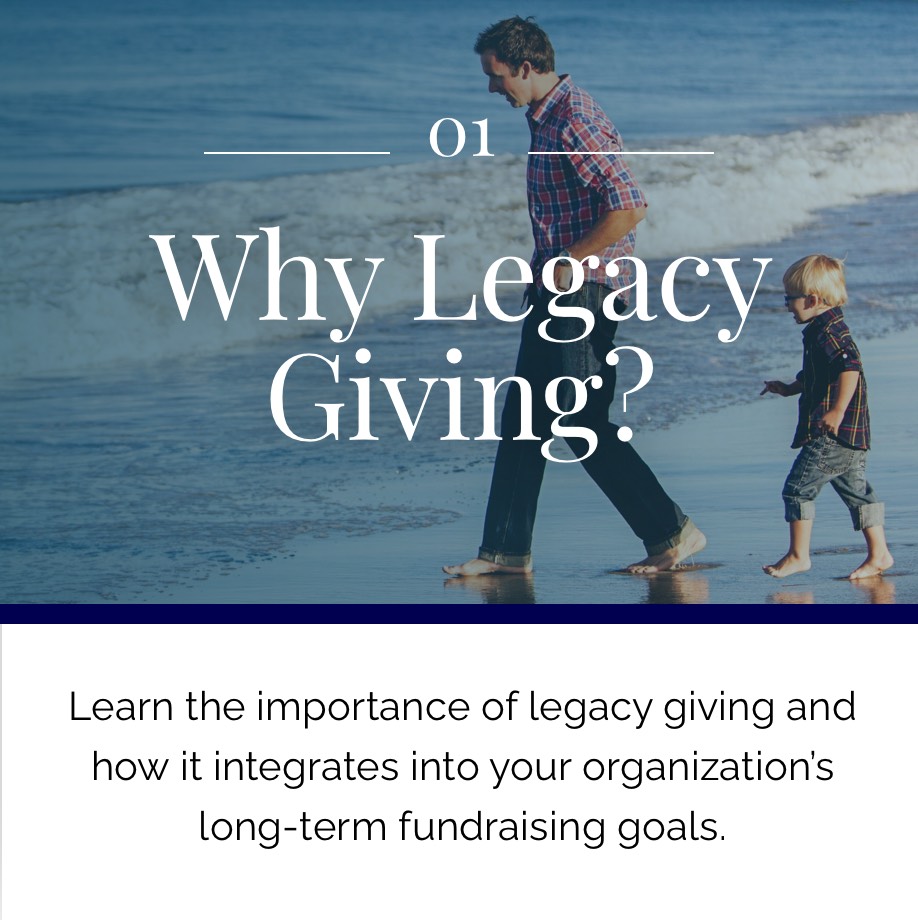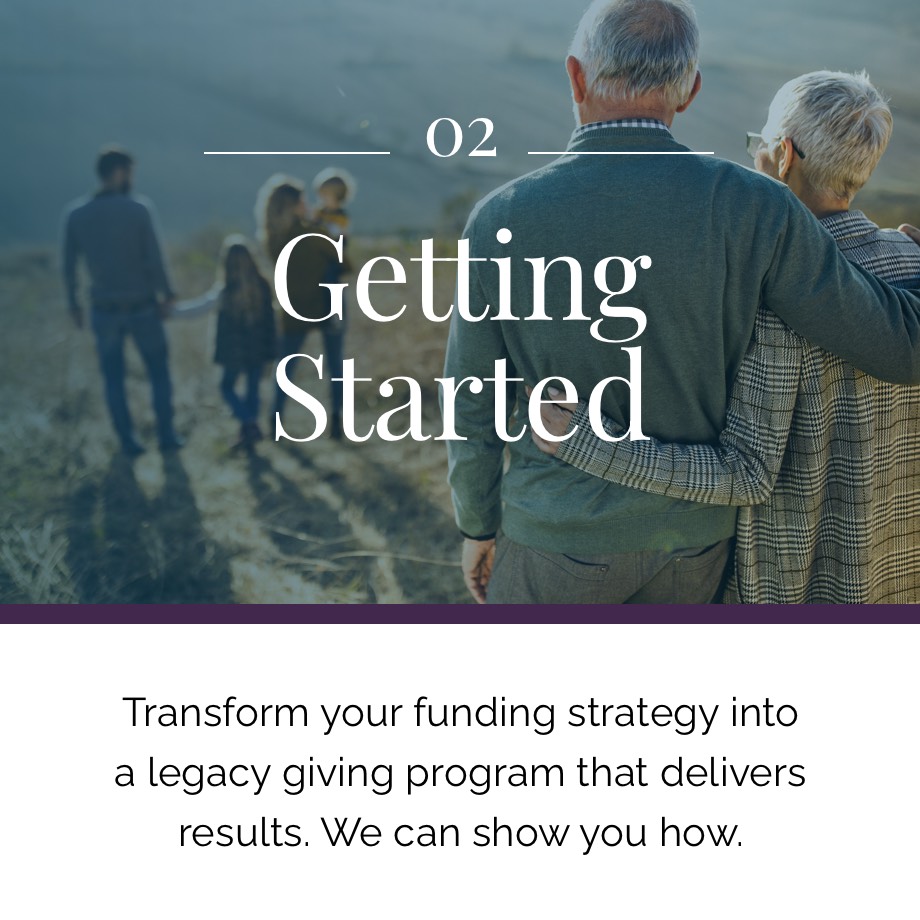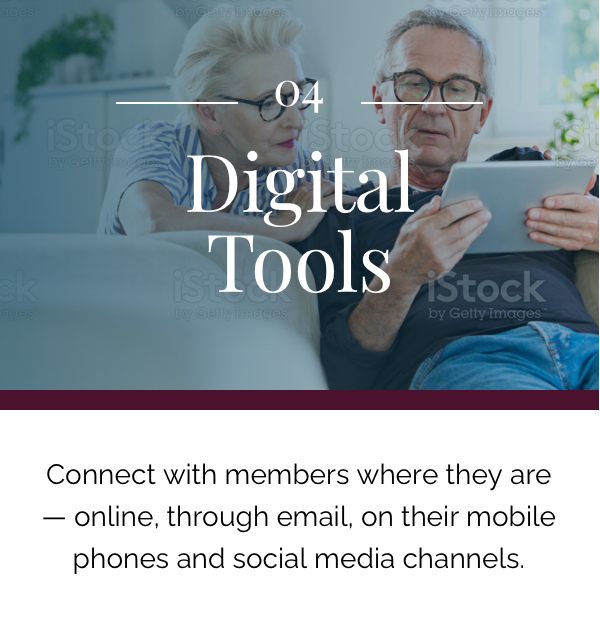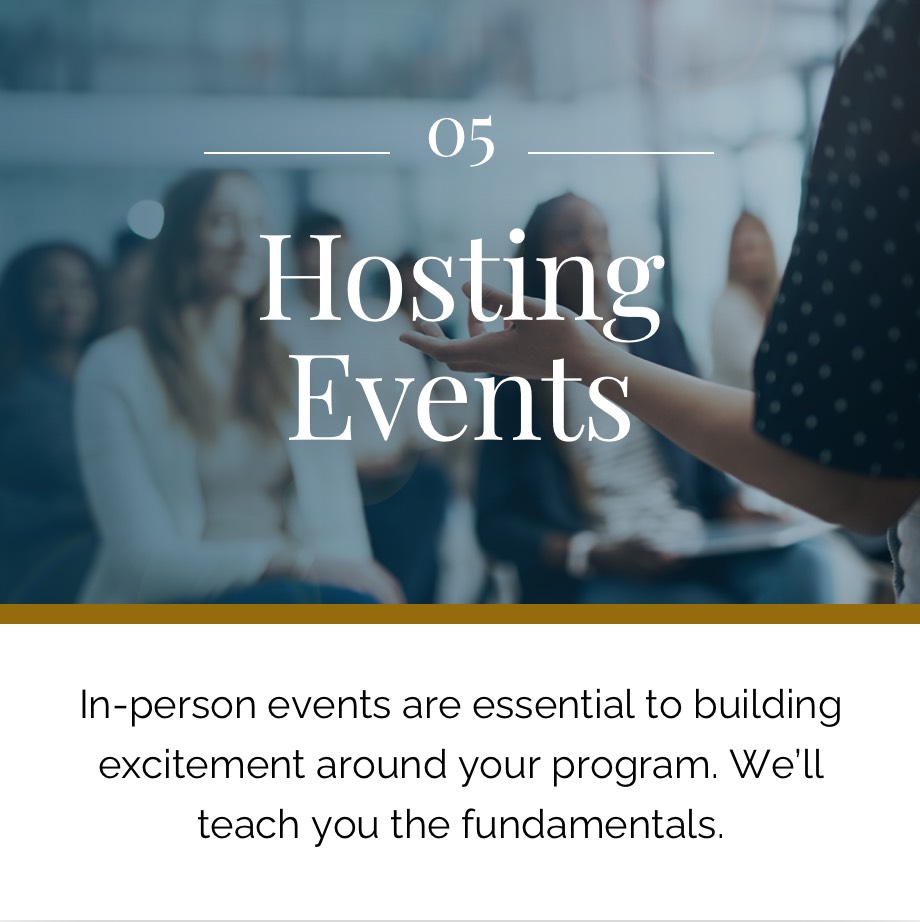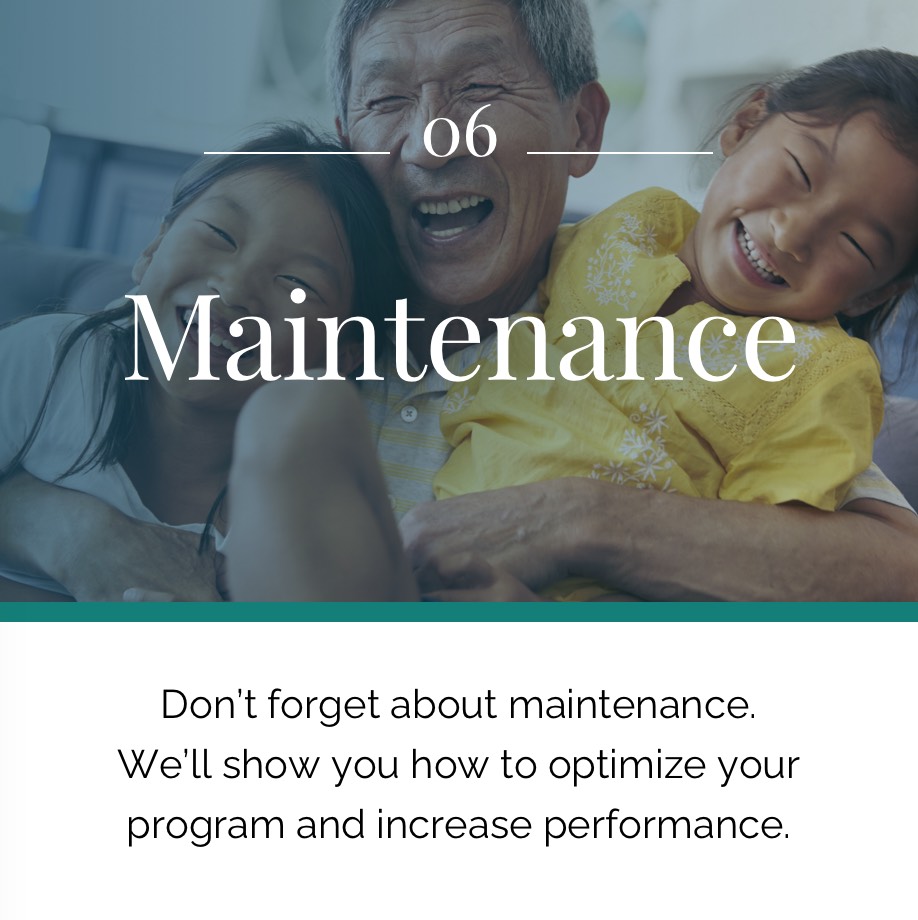Chapter 03
Program Materials
Proven strategies to promote legacy giving

Crafting your generosity message
In the last chapter, we covered the importance of legacy giving. Now it’s time to bring your generosity message to life across a variety of deliverables. We’ll review the steps it takes to create a legacy giving marketing program that connects with your donor base.
Here are some strategies to consider when crafting your generosity message:
- Explain the importance of giving. Introduce the concept of legacy giving by explaining how it provides an opportunity to support your church or nonprofit after you’re gone.
- Outline the benefits. Planned giving offers the ability to impact future generations while also offering tax benefits for members and their families.
- Show the impact. Demonstrate how legacy gifts can make an impact using tangible examples, like funding of a new building or supporting future operations.
- Include a call to action. Don’t forget to provide next steps for anyone who’s interested. If possible, include the phone number or email of a person to contact.
Marketing fundamentals
There are a variety of ways to promote legacy giving. Most successful marketing programs include a number of fundamental components that can be used by people throughout your organization to create awareness of legacy giving. Here are a few ideas to get you started.

Create a legacy giving phrase
Start by creating a simple phrase, like “Please remember [your organization] in your will or estate plan.” Then include that phrase in future communications, including your newsletter, donor materials, or email signature.

Write a donor letter
Introduce the program through a letter that can be personalized, printed on your organization’s letterhead, and mailed to members. Or create a digital version that can be emailed to your congregation or donor base.

Design a brochure or flyer
Take the content from your letter and transform it into a promotional piece, like a brochure or flyer. Add a headline, include a call to action, and drop in your organization’s logo. You can also use TPF’s Legacy Giving Opportunities brochure in your communication. Learn more.

Develop a giving landing page
Add a legacy giving page to your existing website to house all the information about your program. Be sure to include that link on all of your communications. In Chapter 4, we’ll take a closer look into the importance of digital marketing.
Generational Generosity
Does your organization include a donor base that spans generations? Watch a replay of our recent webinar where our legacy giving experts explain the communication differences across generations.

Broadcast your message
Promoting legacy giving is not a “one and done” initiative. It’s important to find opportunities to continually encourage and activate generosity throughout the year. Here are examples you can implement into your ongoing marketing efforts.
Include a story in your newsletter
Publish an article that introduces legacy gifts, describes the structure of your endowment, and reviews planned giving options. Use simple language to increase understanding and build trust.
Mention legacy giving at events
Close each meeting or sermon with a legacy giving reminder. Ask members who have participated in your legacy giving program to deliver a “Minute for Mission” that will tell their story and inspire others.
Create posters and flyers
Simple legacy giving promotional materials are an easy way to keep your program top of mind. Posters and flyers are also a simple way to promote events, like a giving workshop or a membership drive.
Write a legacy giving blog post
Does your organization have a blog? Write and publish an article about the importance of including legacy giving in wills. Highlight members who have participated in your program.
Timing is everything.
When promoting legacy giving, be sure to avoid high-profile events and holidays like Easter and Christmas.
The importance of one-on-one conversations
Legacy giving is a deeply personal and heartfelt act that requires open, honest conversations. Even the most robust marketing campaign will leave members with questions. So schedule personal meetings or coffees with members who have expressed interest in planned giving. These one-on-one conversations provide potential donors with the opportunity to learn more about your program, ask specific questions, and lay the groundwork for their own legacy gift.



Use real stories to spark excitement
The best way to create excitement and show the impact of planned giving is by showcasing fellow members who have created their own legacy gifts. Identify compelling stories of generosity within your organization and use those stories to promote your program. Be sure to include perspectives from all generations. Remember that images will bring this content to life in a way that words cannot.
Recognize the faithful
Remember, your current donors are your biggest advocates for planned giving. Be sure to recognize their gifts and honor their generosity throughout the year.

Acknowledge gifts in ongoing publications.
Highlight donors and their families in communications, like your newsletter or website.
Host a legacy event that celebrates donors.
This can be a lunch or a dinner specifically designed to honor these individuals.
Send personal thank-you notes.
Don’t forget to mail handwritten thank-you notes to each person who contributed this year.
Explore additional resources
Explore the next chapter

Learn how to build program momentum.
